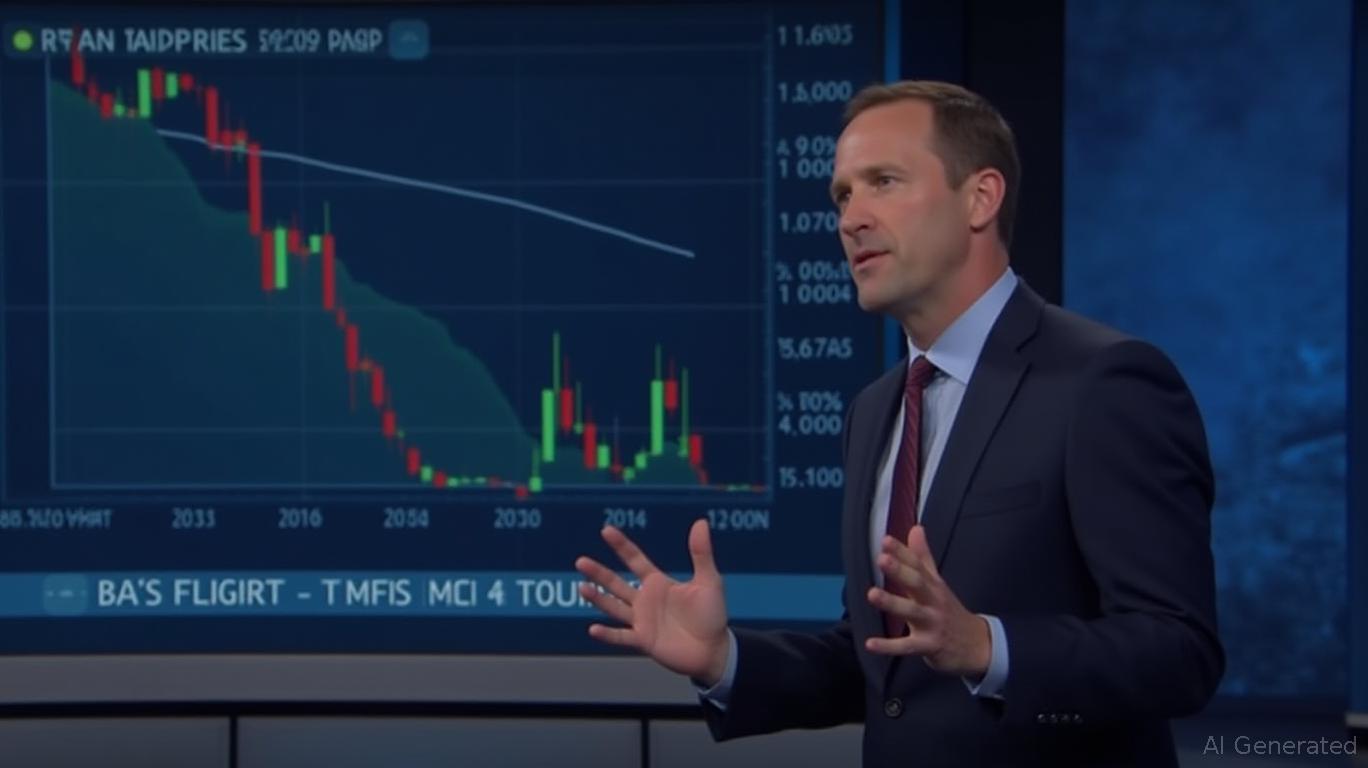Canada’s stablecoin regulations set for November seek to curb capital outflows and safeguard national sovereignty
- Canada plans to unveil stablecoin regulations in the November 4, 2025 budget to curb capital flight to U.S. dollar-backed tokens. - The framework aims to classify stablecoins as securities/derivatives and enforce liquidity safeguards amid $1 trillion annual transaction volumes. - Officials warn delayed action risks eroding domestic financial sovereignty as 99% of stablecoin value is now U.S. dollar-linked. - The proposed rules align with global trends (EU, Hong Kong) and will address consumer protections
Canada Plans to Introduce Stablecoin Regulations in November Budget
Canada is moving quickly to establish a regulatory system for stablecoins, aiming to reveal significant details in the federal budget scheduled for November 4, 2025. According to Bloomberg and several industry and government insiders cited in

The push for regulation is driven by the swift growth in stablecoin transactions, which now total $2.7 billion daily and nearly $1 trillion annually, based on Bank of Canada figures reported in
Recent developments in the U.S., especially the GENIUS Act signed by President Trump in July, have added urgency to Canada’s efforts. The law requires that approved stablecoins be entirely backed by U.S. Treasuries, boosting global demand for dollar-pegged tokens. Mirza Shaheryar Baig, a currency strategist at Desjardins, observed that more than 99% of stablecoin value is now linked to the U.S. dollar, resulting in persistent demand for American debt due to reserve obligations. This trend has raised concerns among Canadian policymakers about increasing reliance on U.S. financial systems.
Internationally, Canada’s strategy aligns with regulatory movements in the European Union, Japan, and Hong Kong, where stablecoin rules are either in place or being developed. The EU’s Markets in Crypto-Assets Regulation (MiCA) and Hong Kong’s rigorous licensing requirements for stablecoin providers highlight the global shift toward formal oversight. The Bank of Canada has pressed the government to act promptly, warning that falling behind could harm Canada’s standing in the digital finance arena.
The upcoming Canadian regulations are anticipated to cover consumer safeguards, clear reserve disclosures, and redemption guarantees—issues that gained attention after the TerraUSD collapse in 2022. While there is no official plan yet to launch a Canadian-dollar stablecoin, authorities emphasize that any such project must carefully balance innovation with economic stability. The budget will lay out the first steps, but full rollout could take several months, according to industry experts.
At present, all eyes are on the November 4 budget as the main milestone. If implemented, Canada’s regulatory approach could become one of the most comprehensive stablecoin frameworks outside the U.S. and EU, providing certainty for both issuers and investors and reducing the dangers of unregulated digital currencies.
Disclaimer: The content of this article solely reflects the author's opinion and does not represent the platform in any capacity. This article is not intended to serve as a reference for making investment decisions.
You may also like
ZEC rallies 12% as bullish momentum continues; Check forecast

Regulatory transparency drives a boom in crypto ETFs, with major players such as T. Rowe Price joining the market
- Canary Capital launches first U.S. ETFs for Litecoin and HBAR on Nasdaq, enabled by SEC's post-shutdown regulatory clarity streamlining crypto fund approvals. - T. Rowe Price files active crypto ETF targeting 5-15 assets including Bitcoin, while Fidelity and Osprey expand offerings, signaling institutional adoption acceleration. - Over 155 crypto ETFs await approval as eased regulations and growing demand drive market maturation, with analysts predicting over 200 listings in the next year.
Privacy, Reimagined
Bitcoin News Update: The Appeal of Bitcoin Compared to Liquidity Concerns: S&P Removes Strategy from Index
- S&P Global downgraded Strategy Inc. to junk status, removing it from the S&P 500 due to heavy crypto exposure and liquidity risks. - The company holds 640,808 BTC ($74B) but faces $15B in convertible debt, risking asset liquidation if Bitcoin prices drop. - CEO Michael Saylor remains bullish, aiming for a $2T Bitcoin portfolio by 2040 despite market volatility and mixed crypto treasury results. - JPMorgan and others are adapting to crypto, allowing digital assets as loan collateral, signaling growing ins
